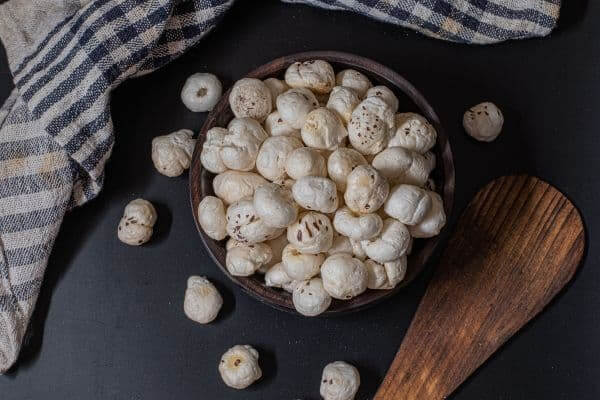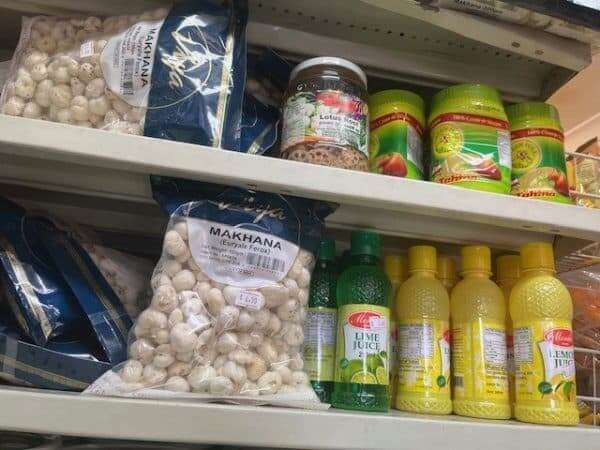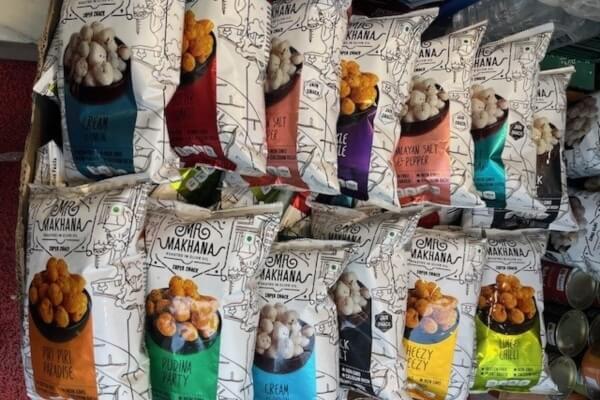What comes to mind when you think of makhana? Navratri? Vrats? Makhana ki kheer? Makhana namkeen? But did you know makhana has recently been reinvented as a so-called ‘superfood, leading to a doubling of its price, and the Union Government allocating funds to establish a Makhana Board in Bihar to manage the “makhananomics” arising from its ascendency to contemporary food stardom?
View this post on Instagram
I remember the first time I tried makhana, simply roasted and sprinkled with salt, at a friend’s home in Delhi in 2000. I was surprised by how delicious it was, and that it was a food I’d never heard of, inspiring me to investigate it. Makhana, also known as fox and gorgon nuts, are the dried and popped seeds of the water lily Euryale ferox Salisb, said to have a 2000-year history on the sub-continent. Classified as a sattvic food and popularly prepared as a sweet prasad for Lord Krishna’s birthday, Ayurveda has long held it as curative of infertility, insomnia and digestive issues. Despite these auspicious associations makhana was considered a ‘humble’ food, sold scooped out of large polythene bags, or in non-descript pre-packs, in provisions stores around the country.
Around 2015, I noticed makhana dressed up in fancy flavour combinations and alluring packaging being sold in upmarket food stores in Delhi’s Khan Market. The lure to get consumers to pay more for less of these souped-up makhanas was its promotion as a “healthy snacking option” that could – holy of holies – help you lose weight while indulging. This was the first stage of the makhana make-over. Its transformation into a ‘superfood’ soon followed. makhananomics

The proposition of a ‘superfood’ is that it contains more nutrients than other foods thereby conferring enhanced health benefits through its consumption; it is not a scientific term. It was invented by an American fruit company to sell more bananas. Most foods labelled as ‘super’, including makhana, are minimally processed plant foods, inarguably nutritious foods, but no one necessarily better than another. The composition of makhana, largely starch (80%) with good amounts of amino acids, calcium, iron, magnesium and potassium, is a scientific fact. Claims that eating it can prevent the predominant diseases of modern India, heart disease, cancer and diabetes, “slow down the ageing process” and “inhibit wrinkles, fine lines and premature greying of hair” lack any proof. Reputable scientific studies on makhana certainly propose its constituent elements ‘might’ ‘potentially’ work in the body in disease prevention, but all conclude that “further research” is needed. It is marketers, and media, who distort the tentative results of rigorous research into conclusive declarations about the powers of makhana. Still, consumers don’t seem to be bothered about this. makhananomics

Another superfood marketing strategy, exampled here by terms used for makhana, is to describe it as an “ancient” food produced by “age-old” and “sustainable” methods. A more factual narrative than the health claims, albeit one veiling reality. Euryale seeds are collected from the bottom of ponds across Eastern India, predominantly in Bihar, a slow laborious process that stirs up mud and debris, causing workers eye and respiratory problems; the plant’s ferocious spiky thorns can tear their skin; leech bites are another hazard, and sometimes divers drown. The harvested seeds are transformed into edible makhana via a painstaking multi-stage process of drying, roasting and hammering to force the seeds’ starchy insides to pop out of the hard shell. All this work is done by hand.
Returning to the proposed Makhana Board. Makhana as a superfood has caused demand to outstrip supply. One role of the board will be to support increased production. The irony of this is that the lauded ‘traditional’ methods of producing makhana cannot meet this challenge. Modern mechanised methods of production will be required, and new higher yielding varieties of Euryale are being created in laboratories; the words ‘industrialisation’ and ‘genetic modification’ are not of the superfood oeuvre. The poor rural communities who produce India’s makhana supply are not benefitting as much as they should, if at all, from its increased prices. Almost all makhana is traded into India, and globally, from Rajasthan and the Punjab, where none of it is produced. It is middle-men and commercial food companies who are reaping the greater profits. The Makhana Board is charged with redressing this imbalance. makhananomics
You might think, so what? If consumers are willingly paying more for makhana believing it can mitigate disease and offer the fountain of youth, that’s their choice. But global experiences have shown labelling something a superfood can significantly disrupt less developed communities who rely on it. And there is a salutatory historical example: spices were the ‘superfoods’ of the middle ages, credited with all sorts of magical powers, leading to huge demand, which led to inflated prices, causing Europeans to sail East in search of the source of spices. I don’t need to tell you how that ended up. makhananomics
Read Also: Millets: Ancient grains on your plate




